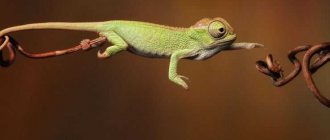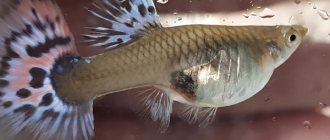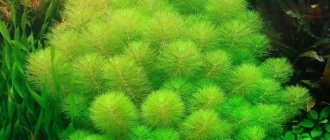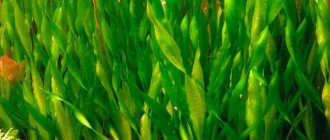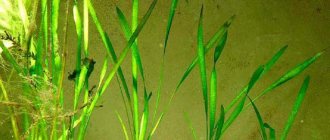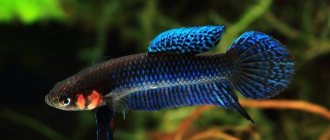When we talk about pets, we usually mean cats, dogs, and birds. But in recent years, more exotic options have become increasingly common - spiders, snails, reptiles, etc. Those who have visited warm southern countries were able to appreciate the charm of nimble domestic lizards, familiar to the tropics, and willingly purchase them in our colder regions.
Should you keep lizards at home?
Lizards as pets are still a less common and well-known option, so before getting one, it’s worth assessing its pros and cons for you. After all, these reptiles are also living creatures that will not survive without human care and outside the home.
There are even more options on the website: https://zeleniymir.org - these are our best friends!
By purchasing lizards, a person takes responsibility for their well-being, and it is worth assessing in advance the advantages and disadvantages of such pets.
Photos of pet lizards look very attractive, but are they right for you as pets?
Feeding
As we wrote earlier, the diet of the common iguana consists of 100% plant foods. An adult animal should eat once a day, babies are fed several times a day. The basis of the diet is all kinds of salads and greens. Offer dandelions, clover, alfalfa, spinach, all different sprouts, salads, beet tops, radishes, pumpkins, etc. Vegetables are given as a supplement to the diet: zucchini, eggplant, carrots and more. Vegetables are finely chopped or grated.
Several times a week, the iguana needs to be offered fruits and berries: apples, pears, peaches, strawberries, currants, and so on. For young iguanas, try to choose a food high in protein, offering: green beans, peas and beans. It is necessary to add special fertilizers for reptiles, vitamins and calcium to the food.
Food is served during the daytime so that after eating the iguana can warm up and digest it. The amount of food offered should be enough for the iguana to eat within an hour. Uneaten food is removed, as prepared salads quickly spoil.
Do not give iguanas cold food from the refrigerator; defrost frozen foods and warm them to room temperature.
Many iguanas often refuse to eat something, why? They might have gotten used to something specific. Still, persistently offer other products; it may take quite some time before the iguana tries them. Try to create a varied diet for your pet.
Do iguanas drink? The iguana absorbs most of its moisture from food and lush greenery. Don't be alarmed if you rarely see her drinking. Bathe your iguana, this will help it replenish the water deficiency in its body; there should always be access to fresh drinking water in the terrarium. Spray the terrarium and leaves; the iguanas will lick the dripping drops of water.
Young iguanas that do not yet know how to drink from drinking bowls on their own should be provided with a waterfall or drip system.
Pros of keeping lizards at home
A significant advantage when choosing lizards as a pet is the absence of wool, fluff, and feathers in the house. This means that there is no risk of allergic reactions among the owners or guests of the house.
Another plus is their constant presence in the terrarium. After all, this makes it easier to maintain order in the house and ensures that there is no risk for your pet of getting accidentally injured from getting into the wrong place.
Lizards are calm inhabitants of the house, not disturbing their owners with an unpleasant smell, loud noise, or pestering in search of affection or play.
There are no special problems in nutrition either; you can use ready-made food or feed it yourself, following the recommendations of specialists.
Watching these interesting reptiles helps relieve stress and brings pleasure to the owners.
Note!
- Indian snakes: sacred, poisonous, most common and dangerous types of Indian snakes and their names (130 photos)
Small snakes - an overview of popular and rare species, habitats, food and names of snakes (115 photos)
Snake bites - the most dangerous and poisonous snakes and the consequences of their bite (110 photos and videos)
Organization of the terrarium
An exotic pet should only be kept in a terrarium. A lizard roaming freely around the house can get injured or burned.
The sizes and shapes of the terrarium can be any, but there is an unwritten rule: the height of the walls of the artificial dwelling must be equal to the length of the amphibian multiplied by 2. At a minimum. Let us remind you: lizards easily climb even a vertical wall.
The material for this can be ordinary glass (an old aquarium will do just fine), but it is better to make the lifting one from wire mesh. In addition, small holes for ventilation need to be installed in the side walls.
There are options for a “house” made from an old bookshelf. In this case, one side wall and the lid of the improvised terrarium are also made of wire mesh.
For your agile pet, it would be nice to decorate the landscape with branches or tree stumps, stone slides, and caves. The nimble lizard will definitely like this decor.
Cons of keeping lizards at home
In addition to the already mentioned cost of purchasing a terrarium and the necessary equipment, a lot of space is required to accommodate it.
It is necessary to study well how to keep a lizard at home, because unlike cats and dogs, their habits and needs are completely unfamiliar to us. Some require a special microclimate, others require special food, such as live crickets.
The need to be careful when caring for the terrarium and pets. Unlike cats and dogs, they do not become attached to their owner, no matter how long they live next to you, and can be aggressive.
Health problems in monitor lizards
The oral cavity of monitor lizards is often affected by stomatitis. The cause of such an inflammatory process can be not only an incorrectly selected diet, but also the pet owner’s failure to comply with the temperature regime in the terrarium. As a result of the disease, tissue death occurs in the lizard's mouth, accompanied by a disgusting purulent odor. Treatment for a monitor lizard will be the establishment of a balanced diet and the creation of favorable living conditions in its home. The wounds themselves are treated with a special cream, and in the presence of extensive ulcers, medical intervention by a veterinary surgeon is required.
In the process of obesity in predators, fat can be deposited on the belly and in the tail area - this interferes with the reproduction of reptiles and becomes the root cause of many diseases. When the level of uric acid in the blood of pets increases, gout develops, against the background of which the joints and kidneys grow in volume. Such diseases are treated by drinking plenty of fluids and using special creams. If it comes to arthritis, you will have to undergo surgery to get rid of acid crystals from the joints.
Types of domestic lizards
The world of these reptiles is so diverse that it is difficult to list all the names of domestic lizards. Therefore, we will name the main groups of lizards that can be kept at home.
Even within groups, different species may differ markedly in size and appearance, but still have some common characteristics, which we will name below.
Habitats
Viviparous lizards are very widespread. Its range covers the northern half of Eurasia from Ireland and the Iberian Peninsula in the west to the Shantar Islands, Sakhalin and Northern Japan in the east. Widespread in the Urals. It is found, although rarely, even in the Arctic Circle.
The viviparous lizard is a more cold-resistant and moisture-loving species than the fast lizard, therefore it is much more eurytopic and goes farther to the north than other reptiles.
Inhabits forests of various types, preferring moist areas (forested areas of swamps, wet meadows). It is often found in thickets along the banks of water bodies, in overgrown clearings, and less commonly on scree and rocks. Only this lizard can be found in high marshes. It often lives near human habitation, reaching fairly high numbers in gardens.
Pet dragons
This is what iguanas could be called for their appearance and size. This is a relatively large species of reptile, some of them can reach a length of one and a half to two meters. They have a stern and slightly frightening appearance.
But at the same time, arboreal iguanas only eat plants, which makes their maintenance easier. Due to their origin from hot countries, tropical forests, they are quite demanding on temperature conditions.
Microclimate
The animal feels normal at room temperature, but if a representative of one of the southern subspecies lives in the terrarium, then the temperature should be maintained within the range of +25 to +30 degrees during the day and from +18 to +20 degrees at night.
The temperature regime can be ensured either with a thermal mat or with an ordinary incandescent lamp with a reflector. But in this case, the lamp should be located out of reach of the animal.
Humidity should be maintained at least 75–80%, which is achieved by regularly spraying the interior of the terrarium.
To organize feeding, you need to install a food cup and drinking bowl. Over time, the lizard gets used to one place for eating and drinking.
Skinks
This is the largest family of lizards, numbering more than 100 genera and 1.5 thousand species. Therefore, in this family you can find specimens of both bright colors and discreet modest ones.
There is the same spread in the size of different representatives of skinks: some barely reach 10 centimeters in length, others reach 70 centimeters.
They are all quite unpretentious, calm, and love privacy.
Reproduction
Common iguanas become sexually mature at the age of 3-4 years.
The breeding season begins in January or February. During the mating season, males become aggressive towards nearby rivals. During courtship, males sniff and lightly nip females on the neck. Pregnancy lasts about 65 days, during this period they are characterized by a sharp decrease in appetite, up to complete loss. Pregnant females need to be fed generously and given more minerals and supplements for good egg formation. About a week before laying, the female becomes restless, begins to dig, looking for damp, dark, cool places. The terrarium should have a sufficiently large layer of digging soil so that it is convenient for the female to dig a hole for the eggs.
Egg laying can take up to a week. The eggs are transferred to a special substrate for egg incubation. This substrate does not mold and retains moisture well. The eggs are transferred to an incubator where they are incubated for about 70 days.
Chameleons
These lizards have a bright appearance that will make them a real decoration. In addition, they easily get used to people, are unpretentious, and rarely get sick, which makes them a popular choice for keeping in the home.
Geckos
These are small, but very active and funny lizards. Thanks to the special design of their legs, they can run on any surface - from floor to ceiling.
Another feature of geckos unique to lizards is the ability to communicate not only through tail flapping, but also through sounds.
Description of the common iguana
This is a large lizard. The average body length of an adult reptile is approximately 1.5 m. Such an iguana weighs up to 6.8 kg.
Sizes depend on both age and gender. The male is larger than the female.
There are salt glands on the head through which excess salts are excreted.
The iguana is a large lizard whose weight can reach 6.8 kg
The reptile uses its strong flexible tail not only for swimming, but also as a weapon for attack and defense against predators. Just like other lizards, in extreme cases it leaves its tail in the teeth of the enemy.
Appearance and sensory organs
The body of the iguana is long, scaly, flattened laterally. There is a leather pouch on the throat for thermoregulation. A pointed ridge runs along the body and tail.
Powerful paws are equipped with five fingers with sharp claws adapted for climbing.
The head, protected by shields, has a tetrahedral shape. With triangular sharp teeth located on both jaws, the lizard deftly gnaws prey, and, if necessary, bites painfully. If she loses a tooth, a new one quickly grows in its place.
The iguana gnaws leaves with its sharp teeth and can even bite
Although the iguana is called green, its color includes blue-green, reddish, gray, yellow, pale pink and lavender tones.
Color depends on age or environmental conditions. For example, in juveniles, body color changes during the molting period. Cold-blooded lizards are able to regulate their body temperature. At the same time, the color of the skin also changes: in cool weather, reptiles darken, and in high temperatures their skin becomes lighter.
Overheating or hypothermia is extremely harmful for common iguanas. The latter is the most dangerous. Due to a strong decrease in body temperature, the lizard will die.
The appearance of bright orange waves on the chin, crest, body and legs is a sure sign that the mating season will begin in 3-4 months.
Orange stripes on the iguana's body indicate that mating season is approaching.
The green iguana has keen eyesight. But he sees worse in the dark. Due to the deepening of the lower eyelids, the reptile's eyes do not close completely, so it can see even with drooping eyelids.
Reptiles are able to distinguish colors and sense ultraviolet light, which is necessary to regulate body temperature. They perceive ultraviolet radiation with the “third eye” in the crown area.
Hearing is good, but if the lizard is overheated or very cold, then it hears worse.
The iguana's tongue distinguishes tastes.
Habitat
The species today is found in tropical forests, on sea coasts, mangroves in Central and South America, Southern Mexico, as well as on the Virgin, British and Hawaiian Islands, and Grand Cayman.
Areas of distribution of the iguana family
Agamidae
In this family you can find arboreal lizards, terrestrial and aquatic species. They also differ in diet. Among agamas there are both carnivores and plant eaters.
Everyone will need to create appropriate conditions for which they are quite demanding.
Other indicators for pet comfort
Stable temperature is not the only requirement for living conditions for a lizard:
Ultraviolet rays - the pet needs sunlight, for this it is recommended to equip the terrarium with a UV lamp (5% marking). It must be turned on constantly and replaced every 6 months. If there is a deficiency of ultraviolet radiation, the animal’s body cannot fully absorb calcium, bone tissue is destroyed, and the pet dies in agony.
Humidity control – it is recommended to install a small reservoir of water in the lizard’s home, into which it can climb on its own, and it is placed in a cool area. In addition, you can spray the interior surfaces of the terrarium daily or use moistened sponges
It is important to avoid excessive humidity, as fungi often grow in such conditions. You can avoid such a nuisance by ensuring good ventilation.
Decor - the pet needs shelter and a pond, you can also mark twigs and snags on which the lizard will climb.
Soil - it is placed at the bottom of the tank; any material intended for this purpose can be used
Only small shavings and sand are not suitable, as they can penetrate with food into the animal’s gastrointestinal tract and provoke various kinds of problems.
